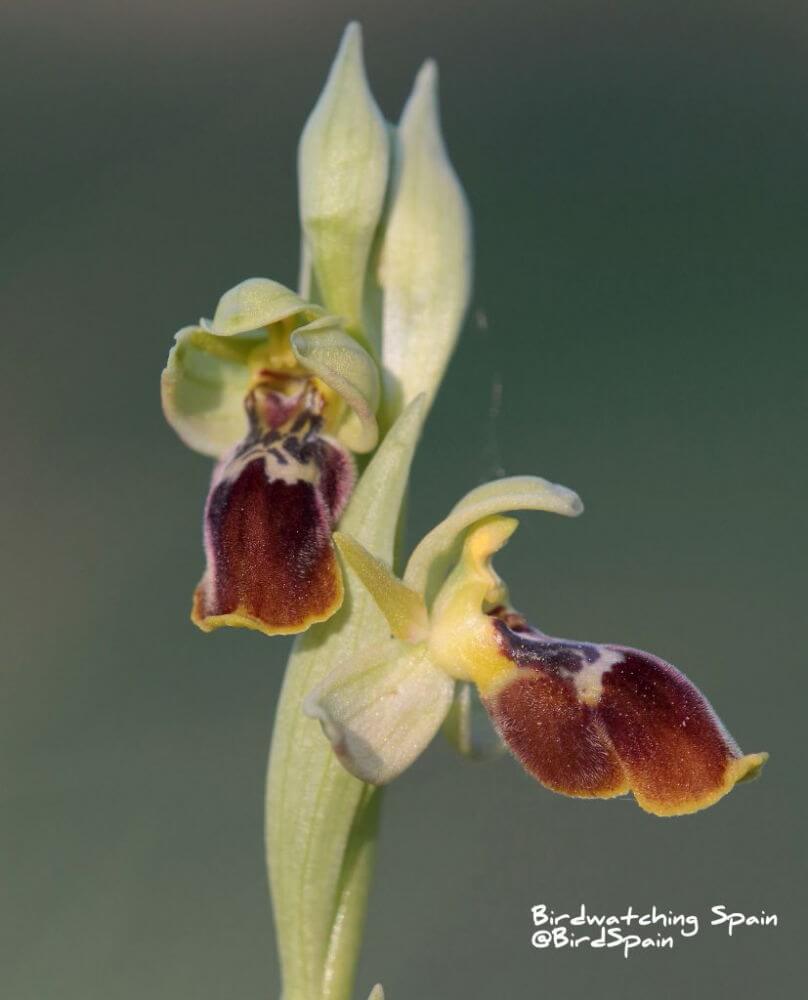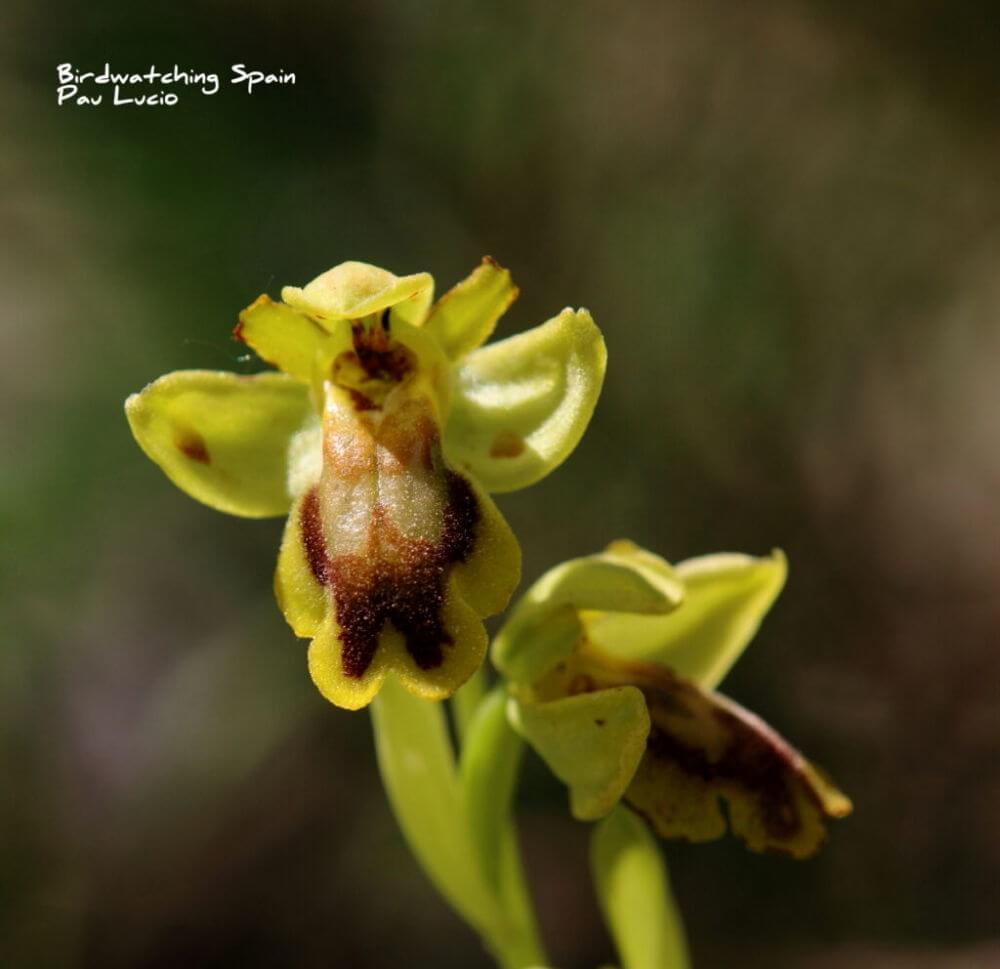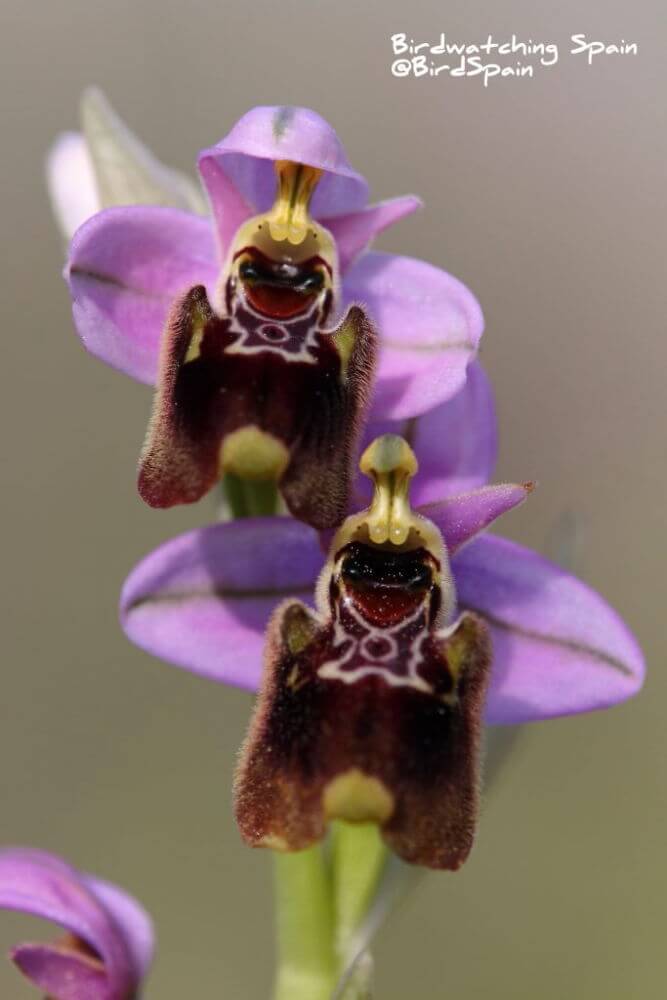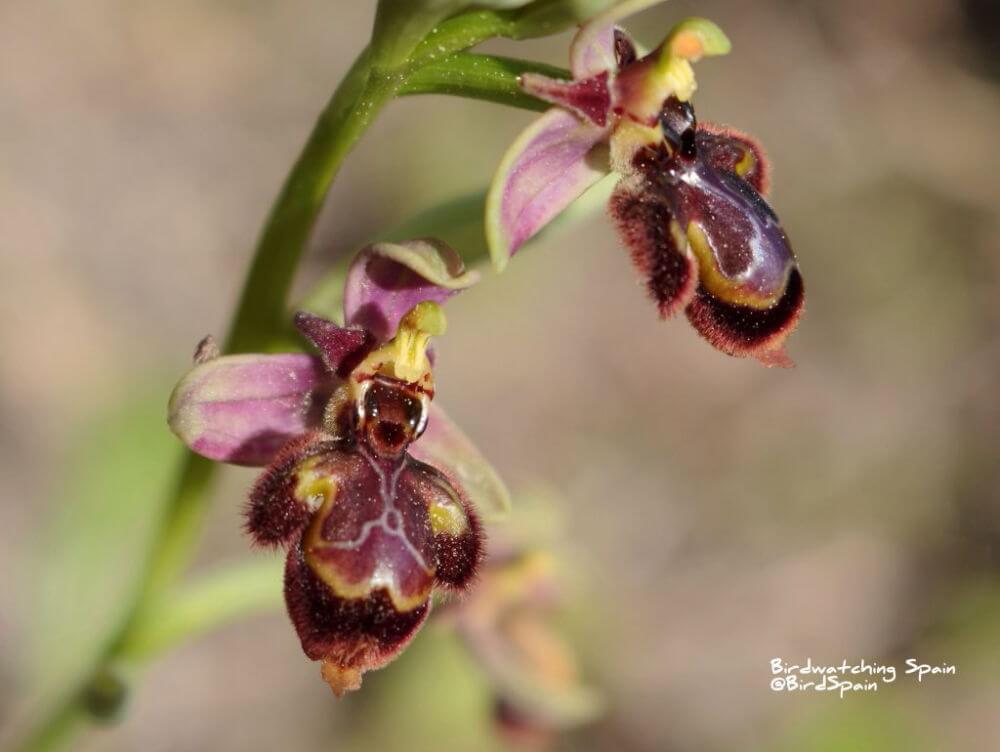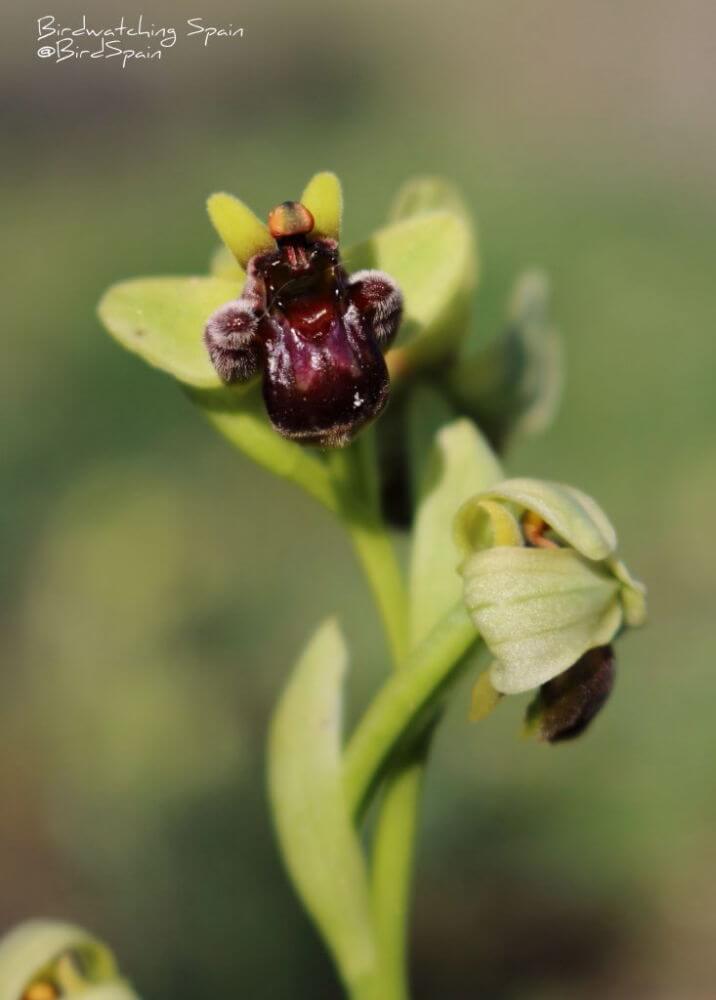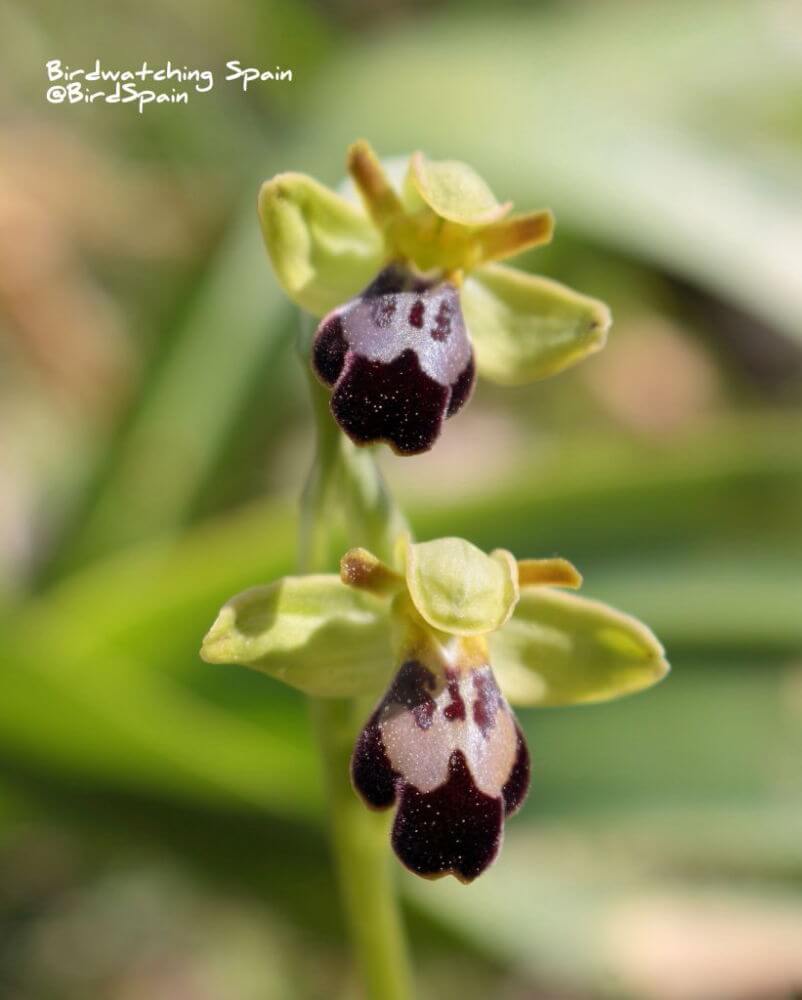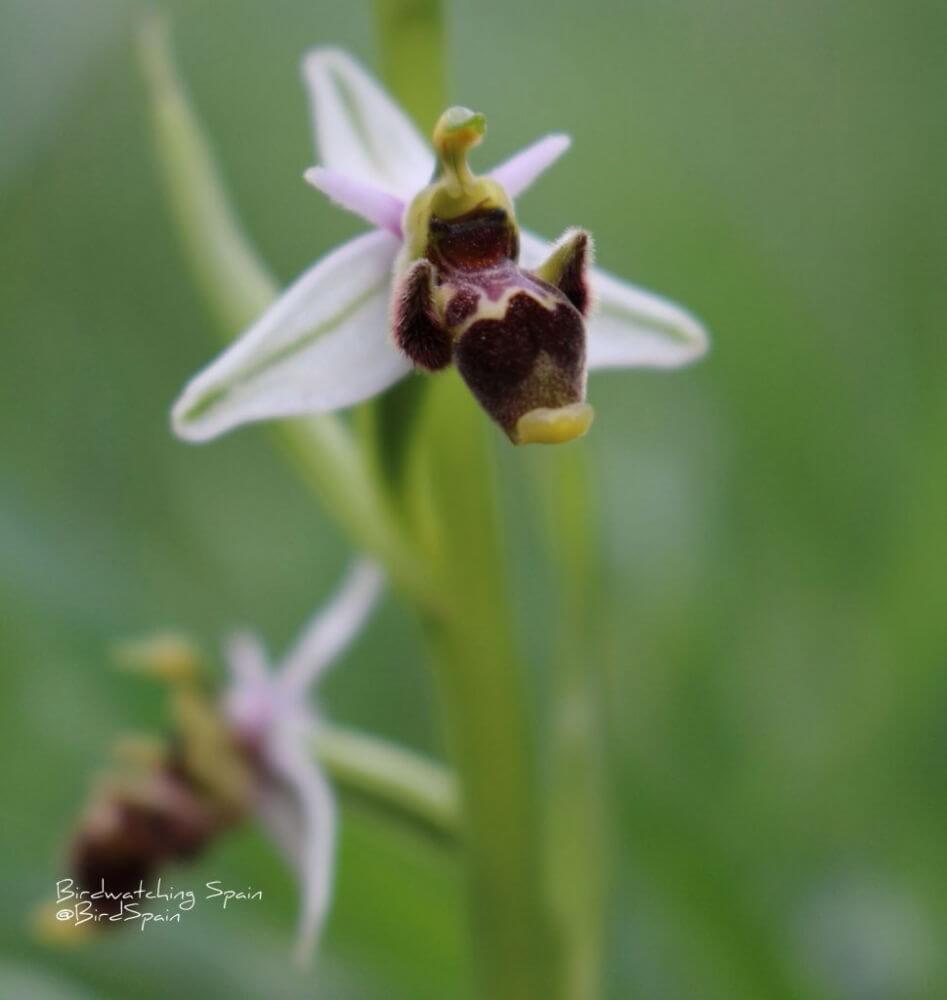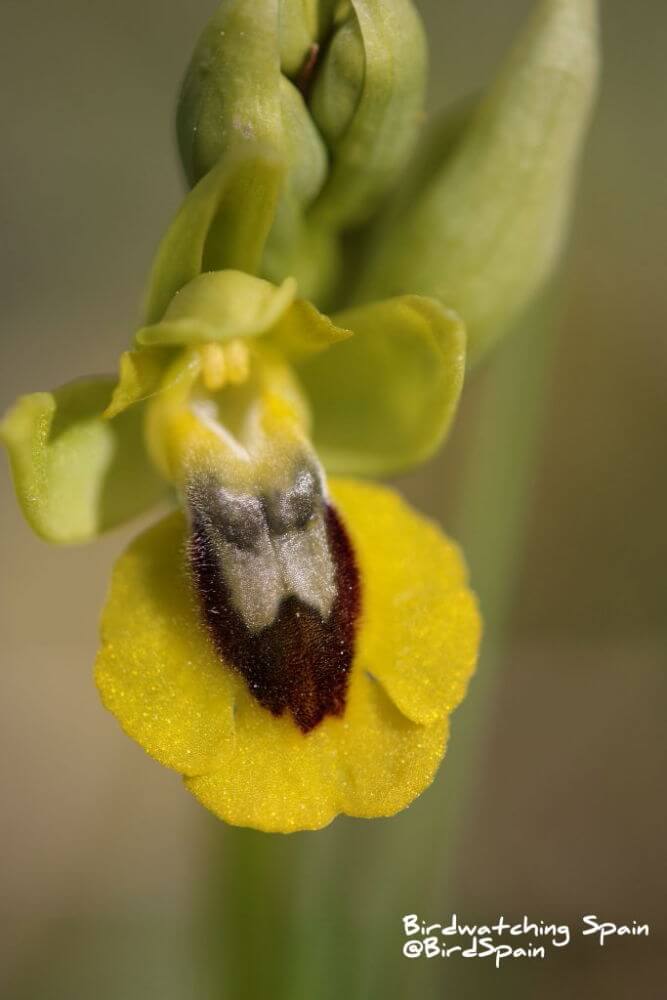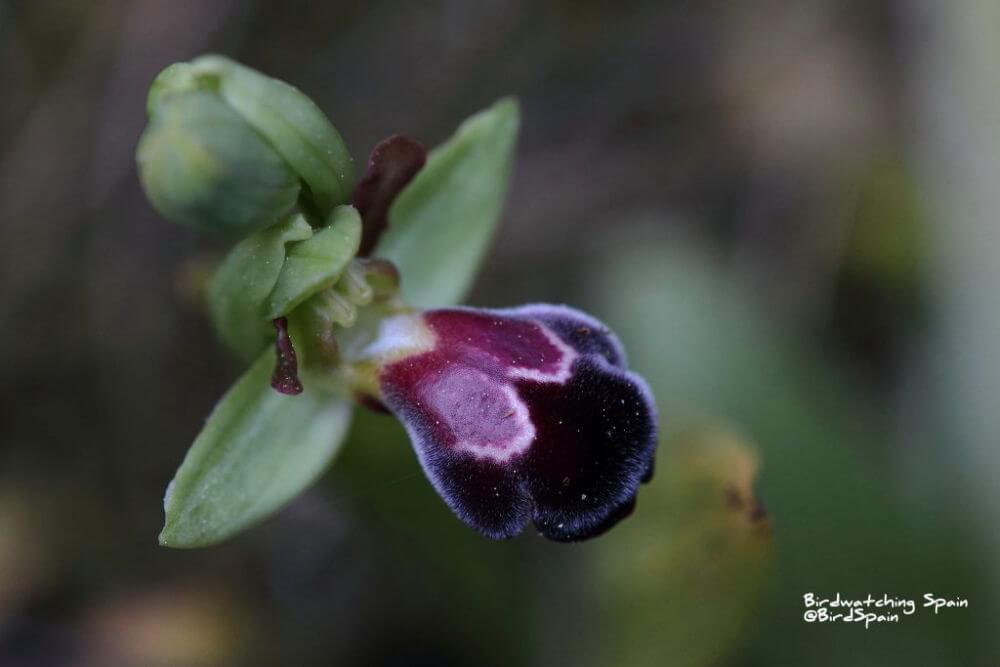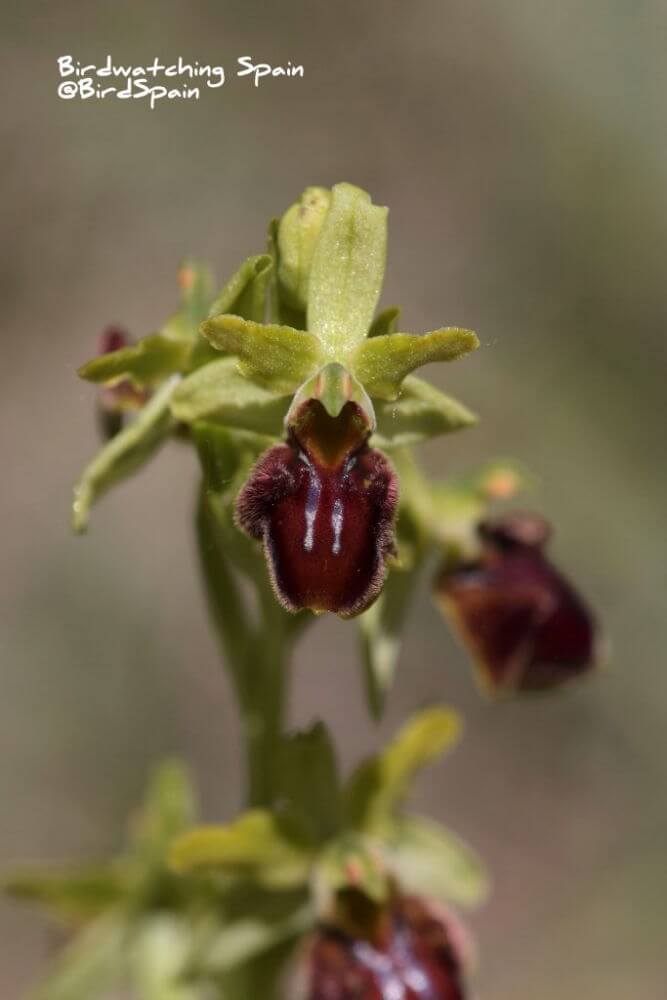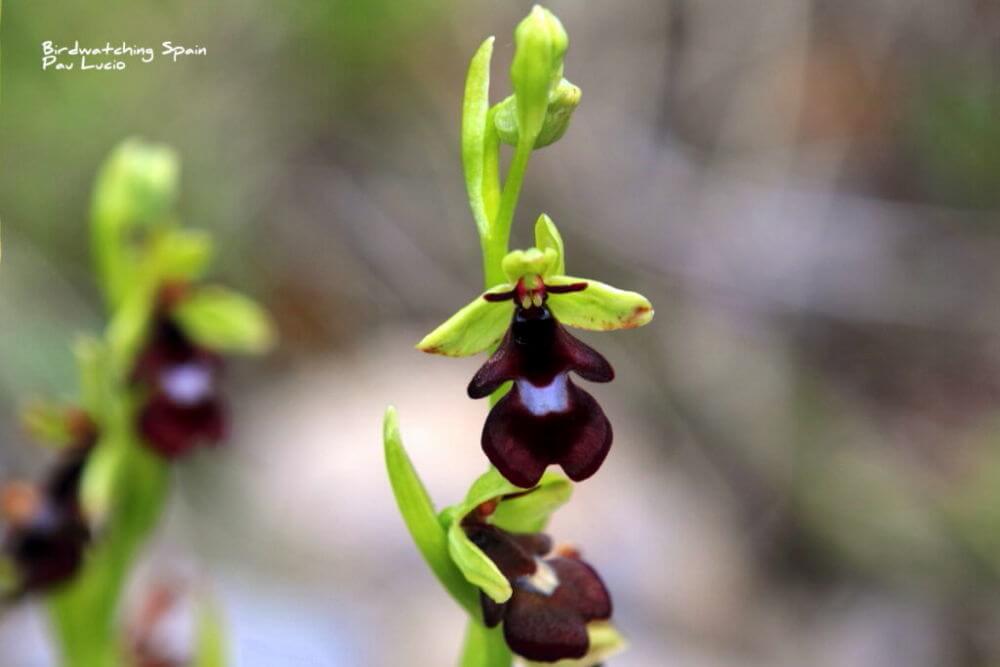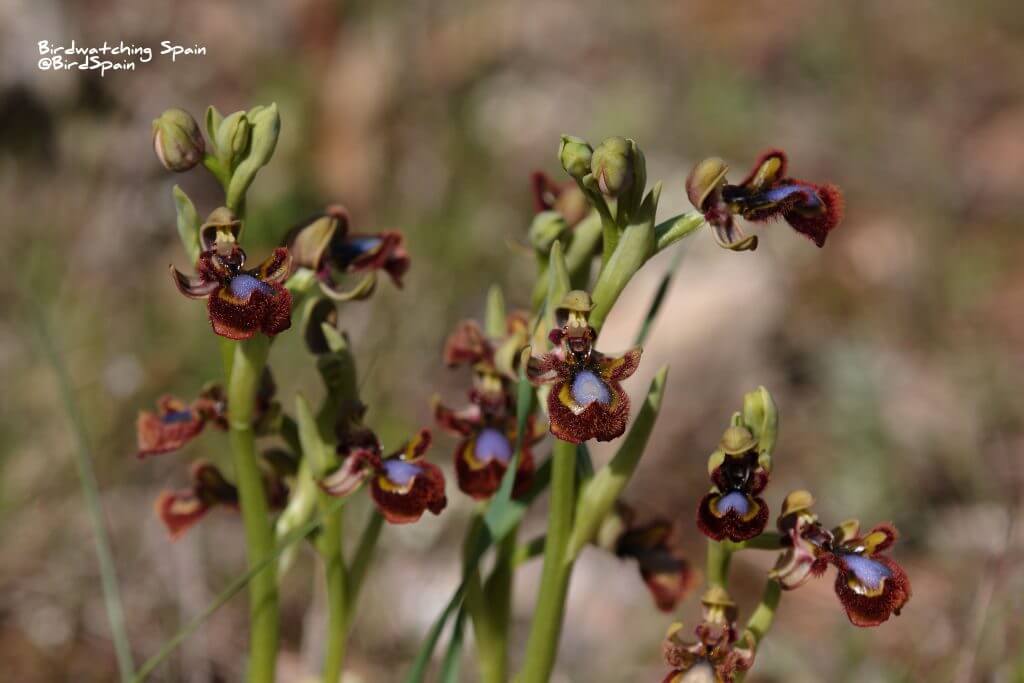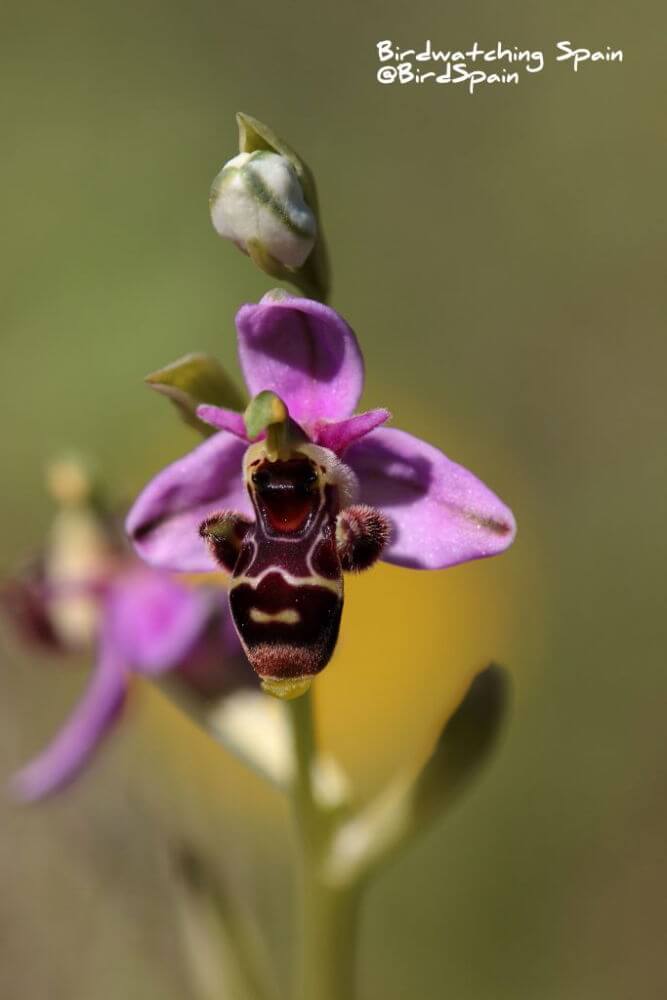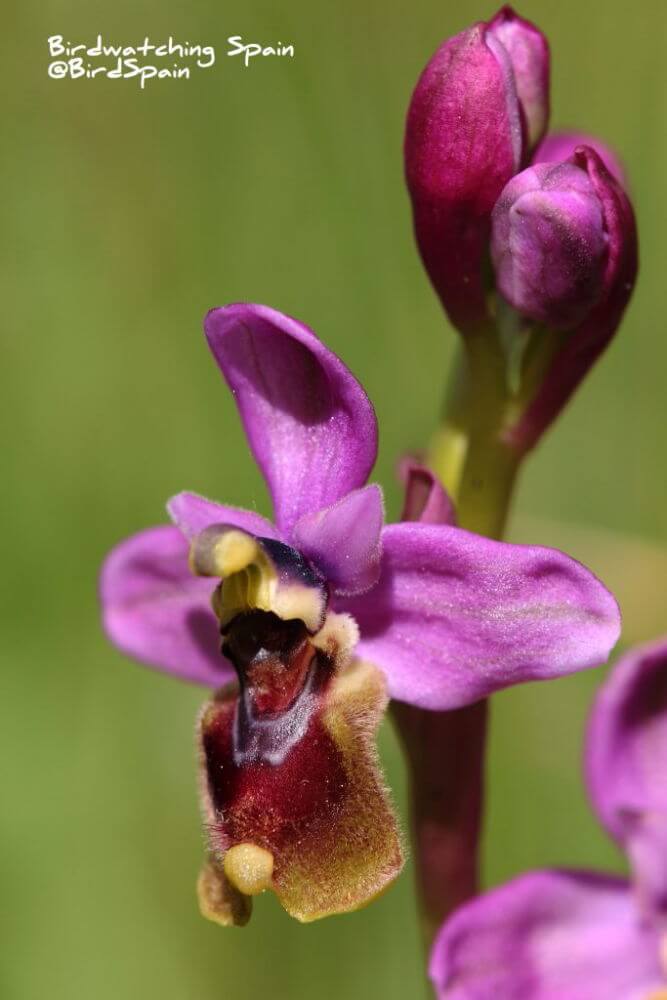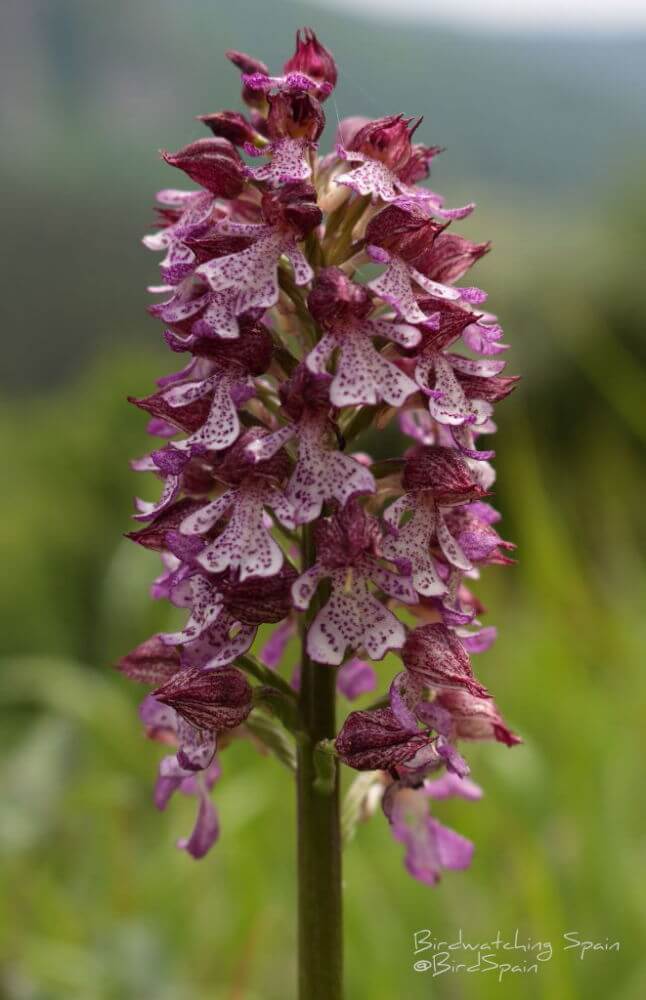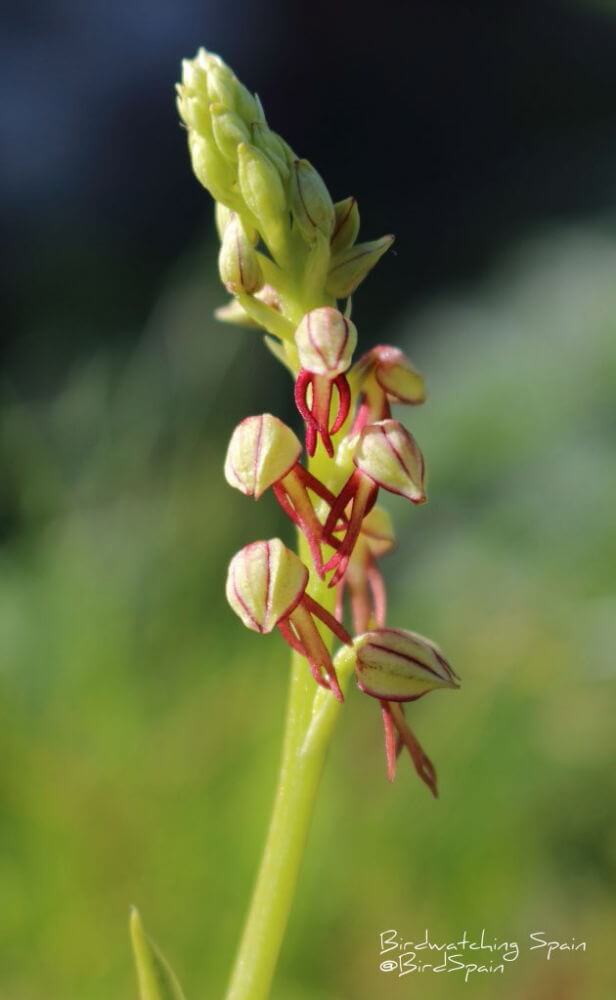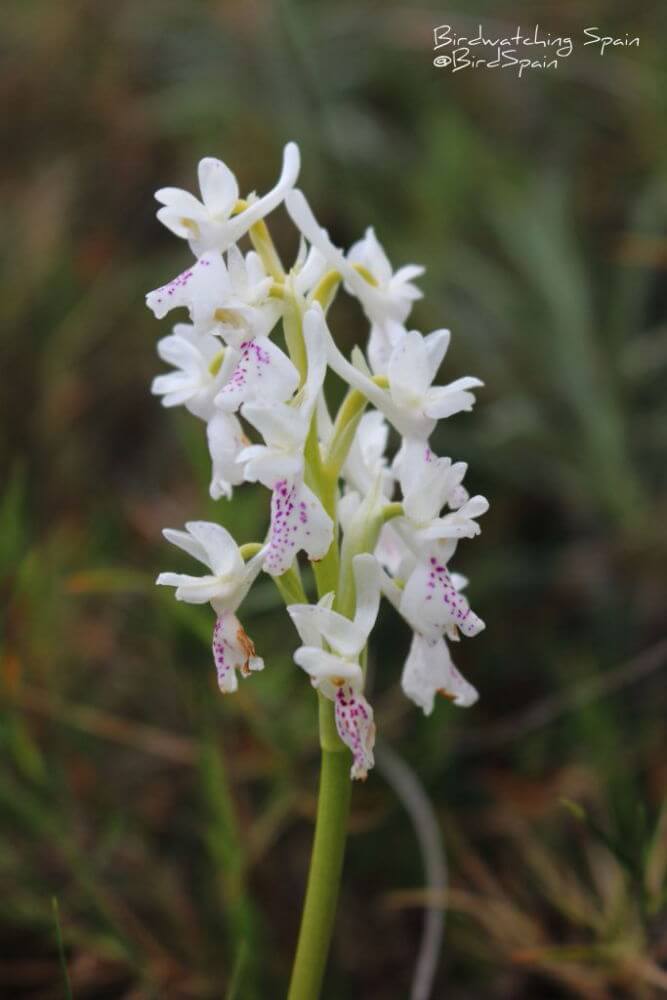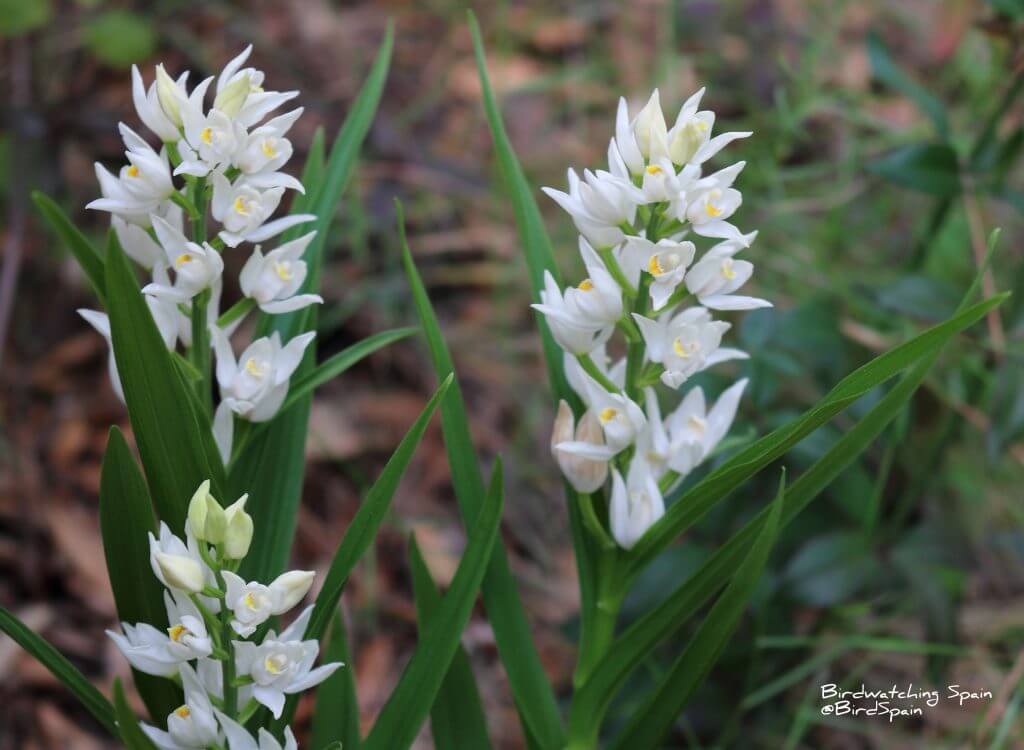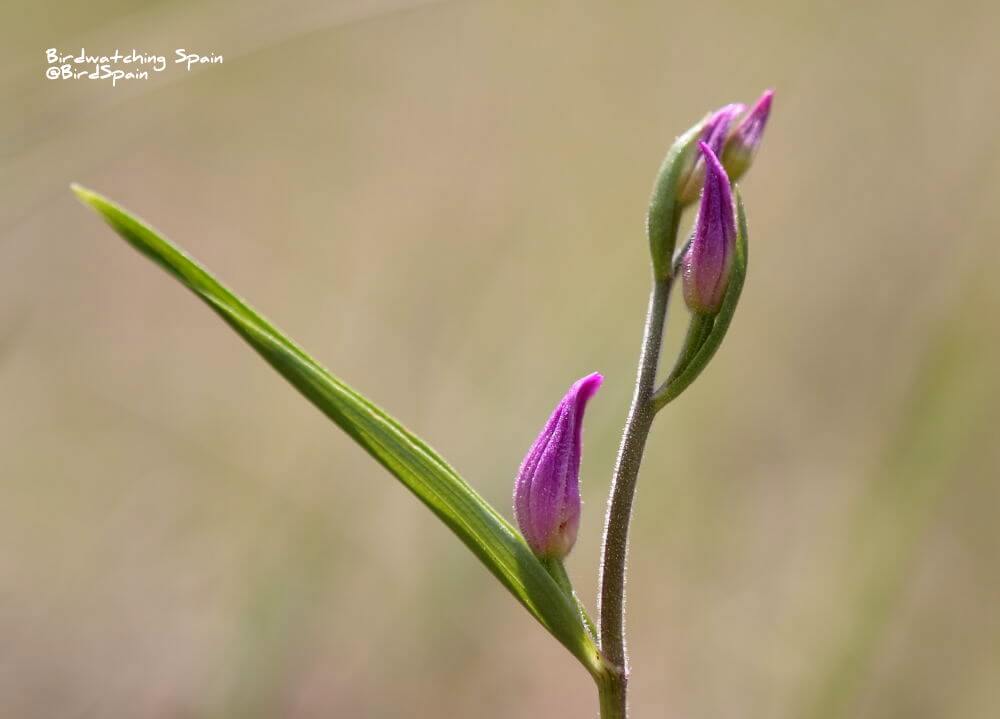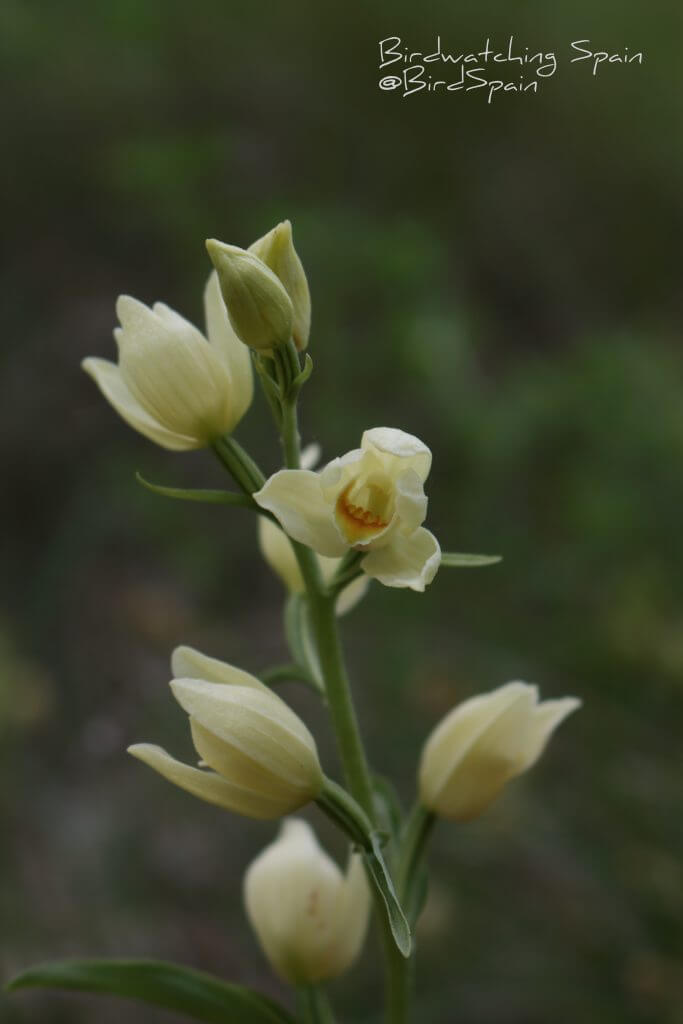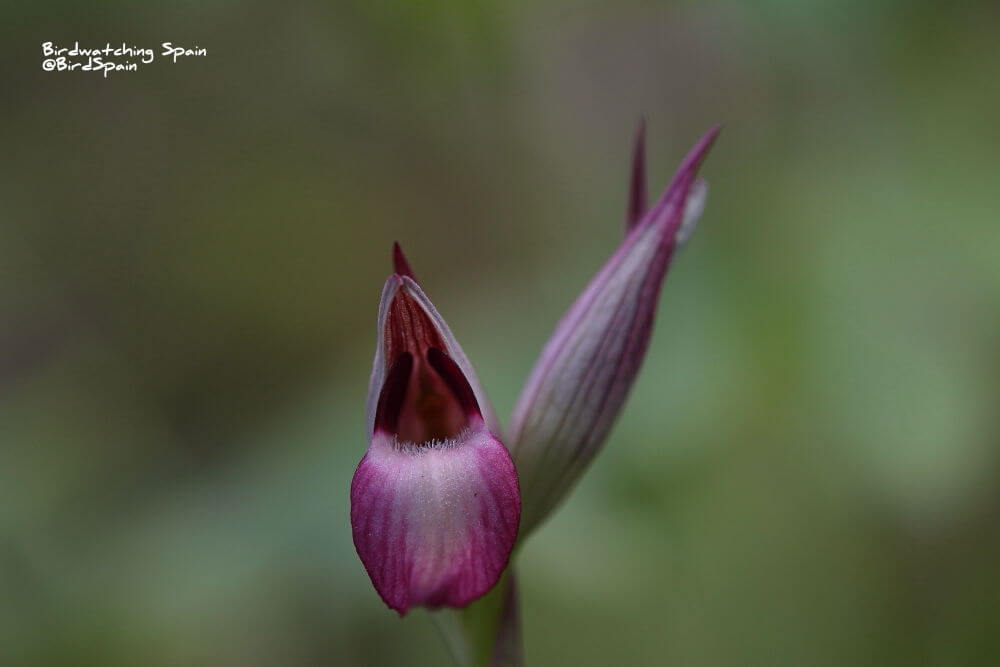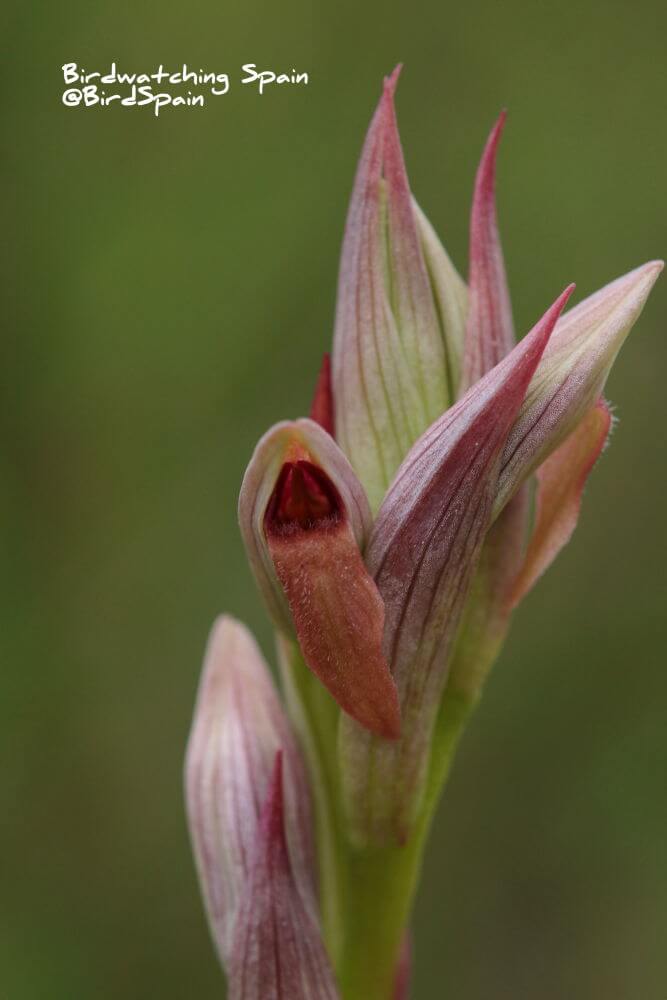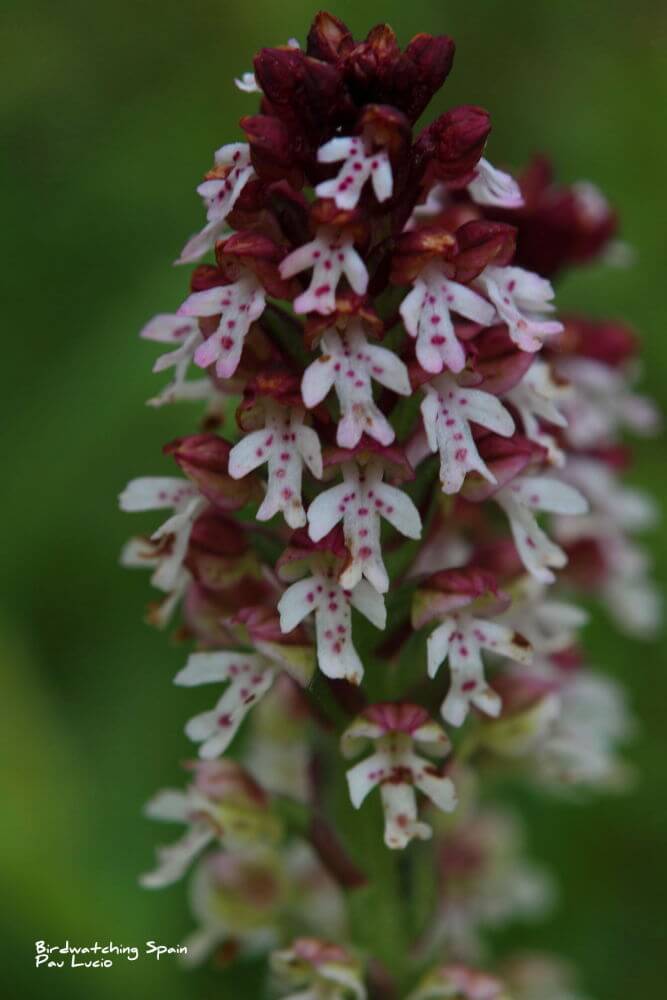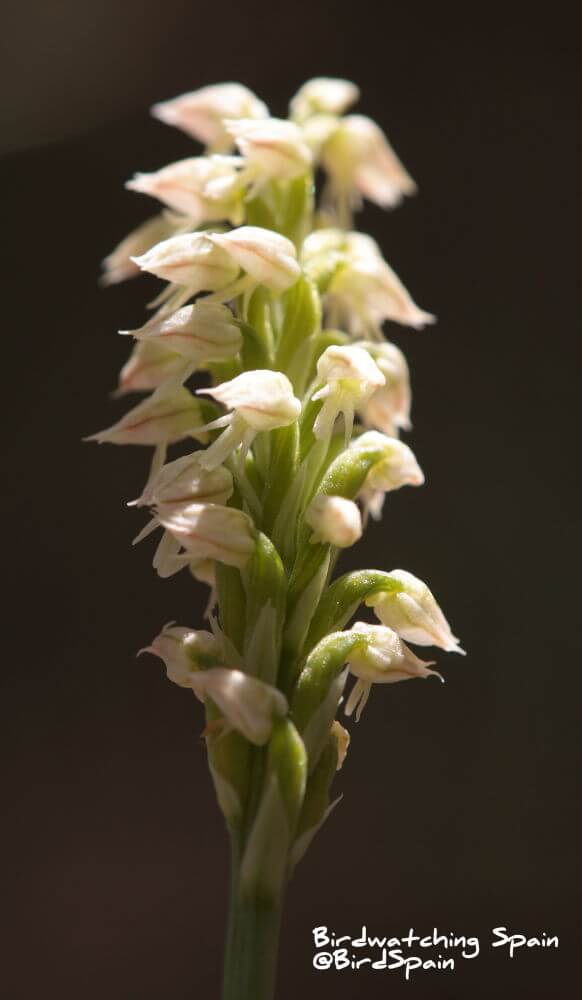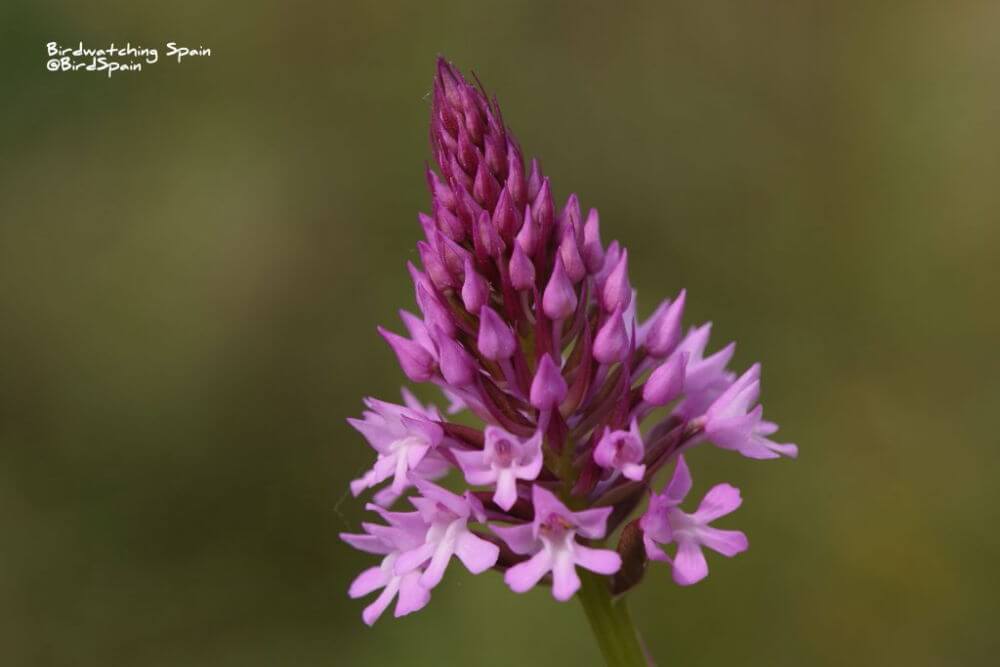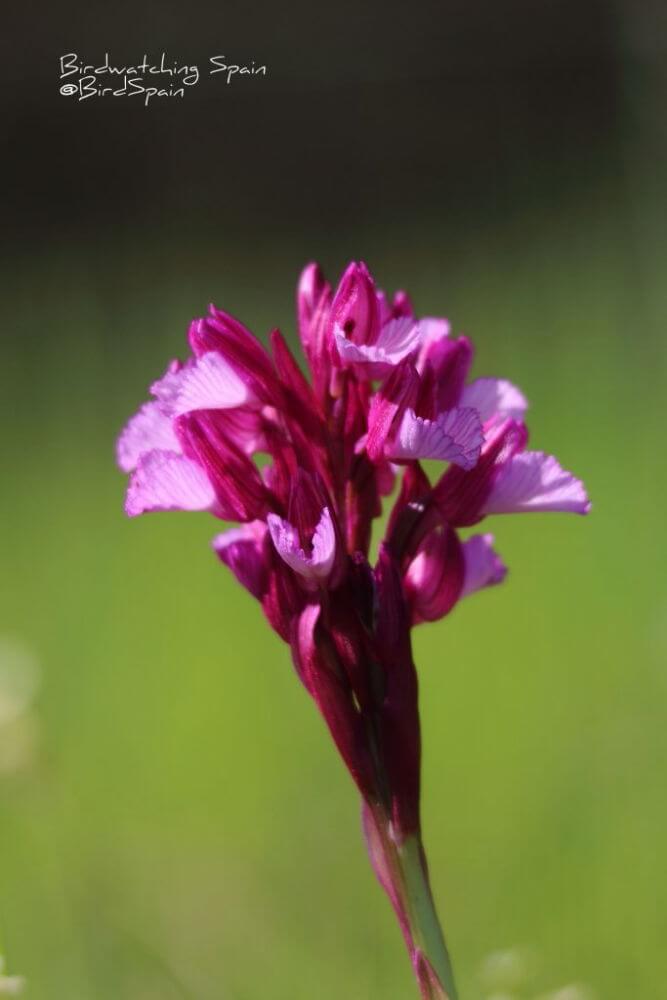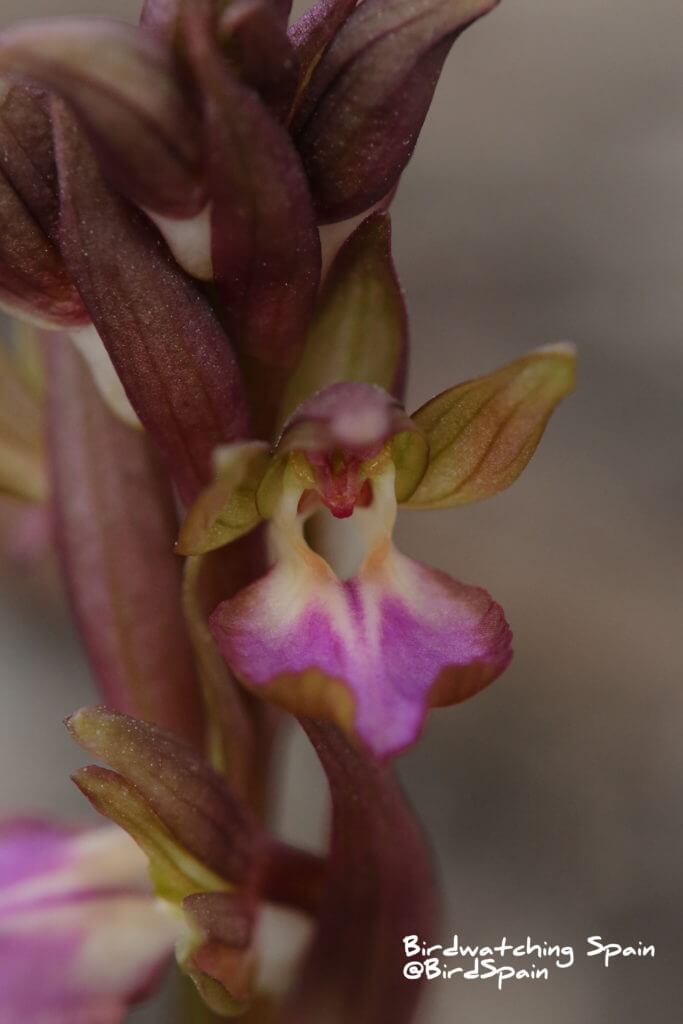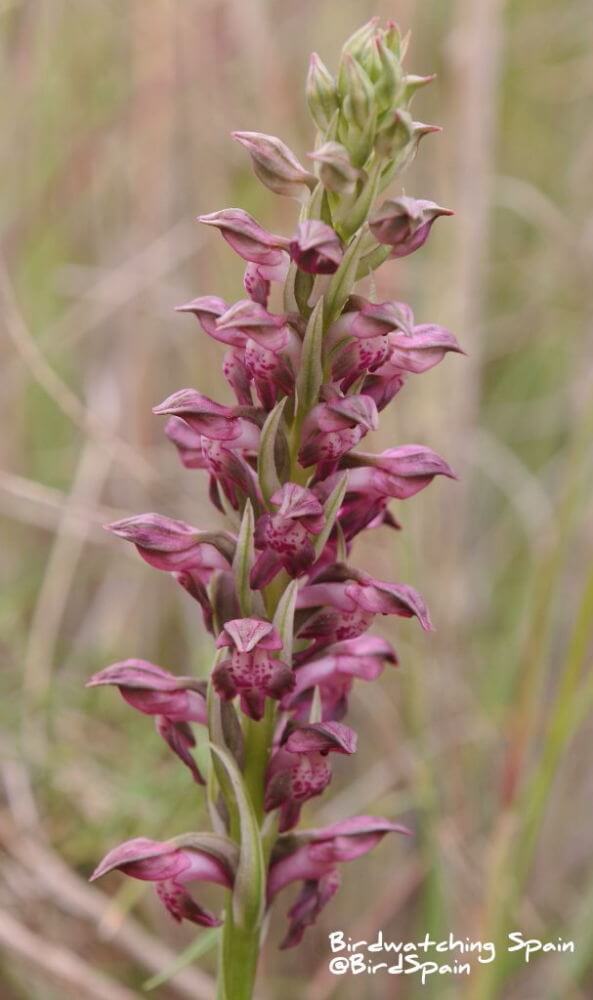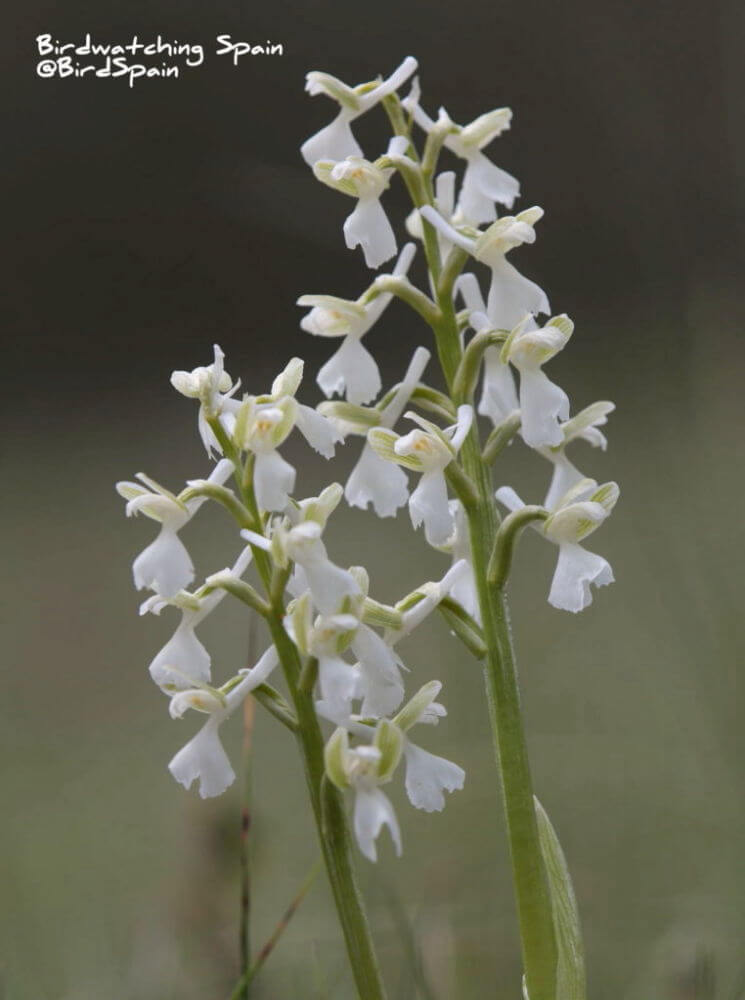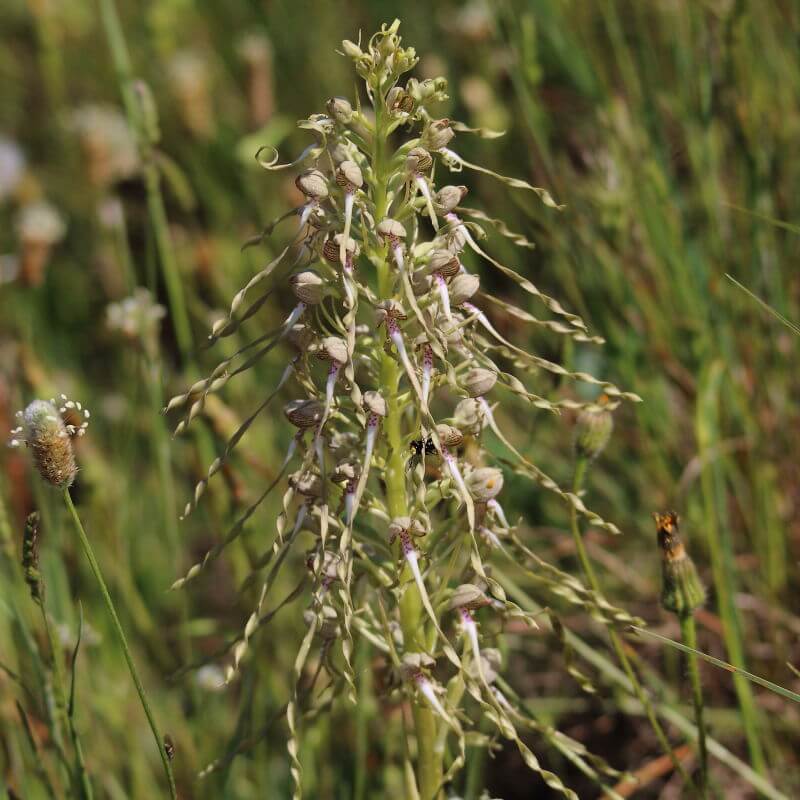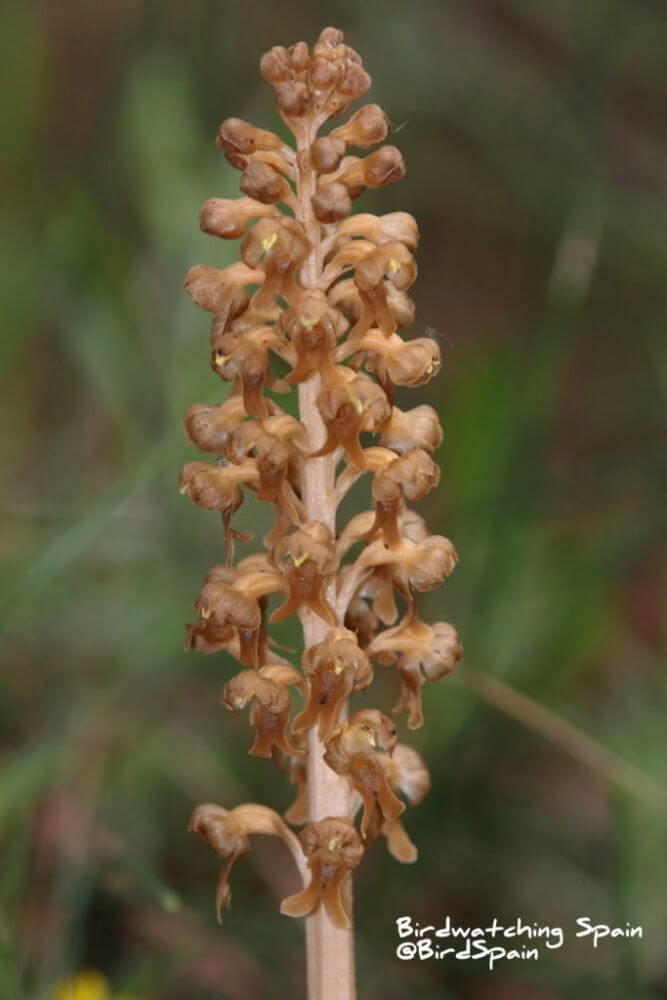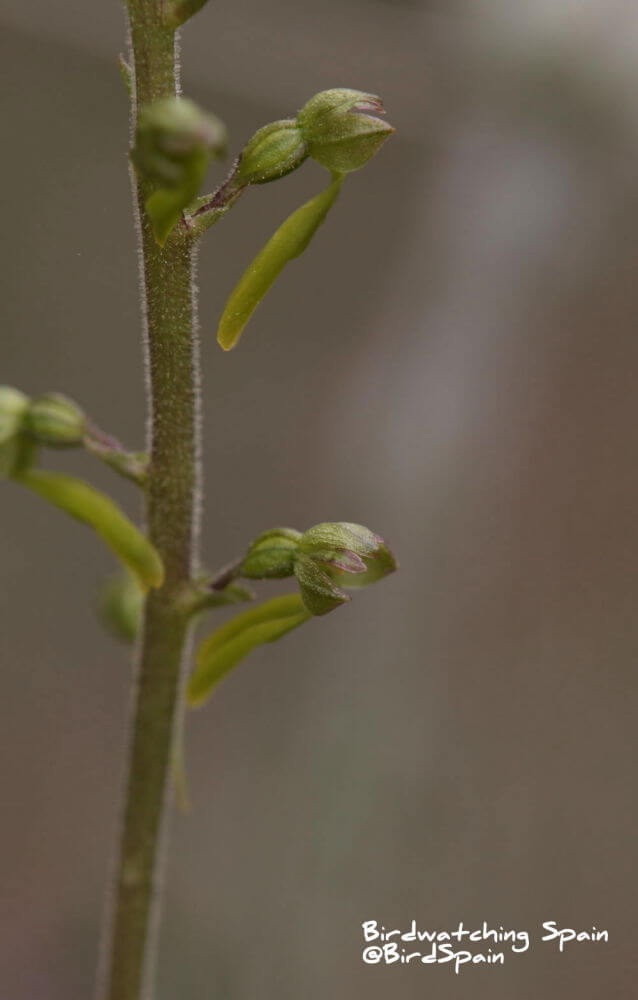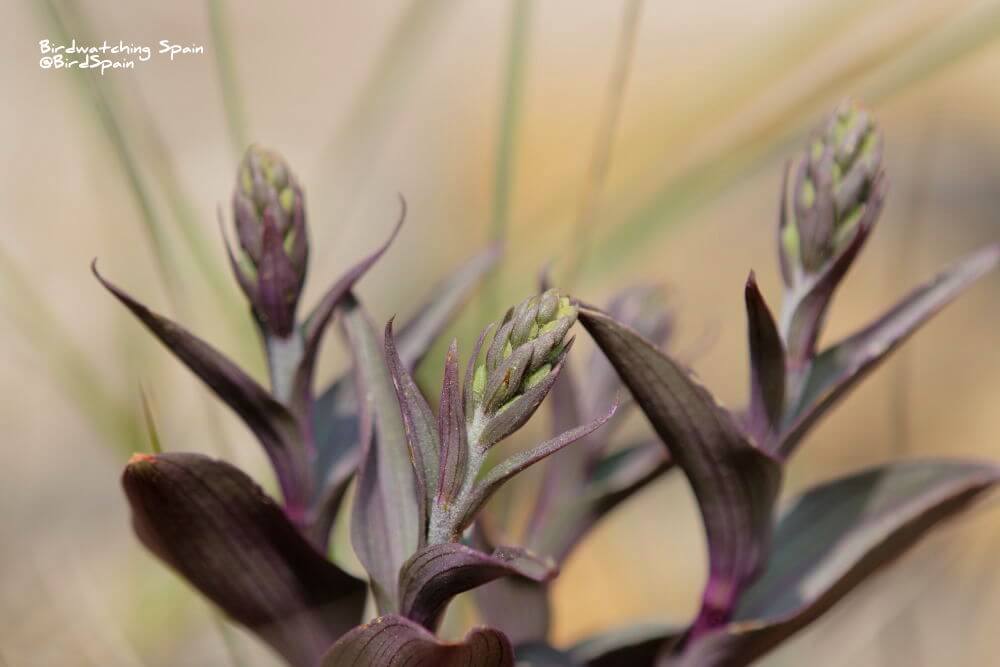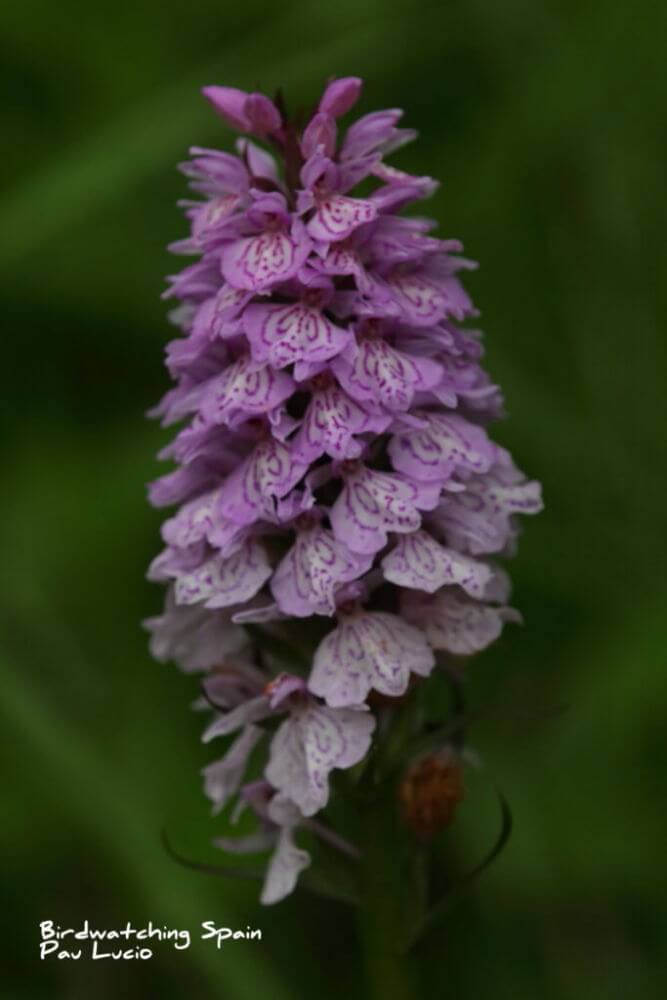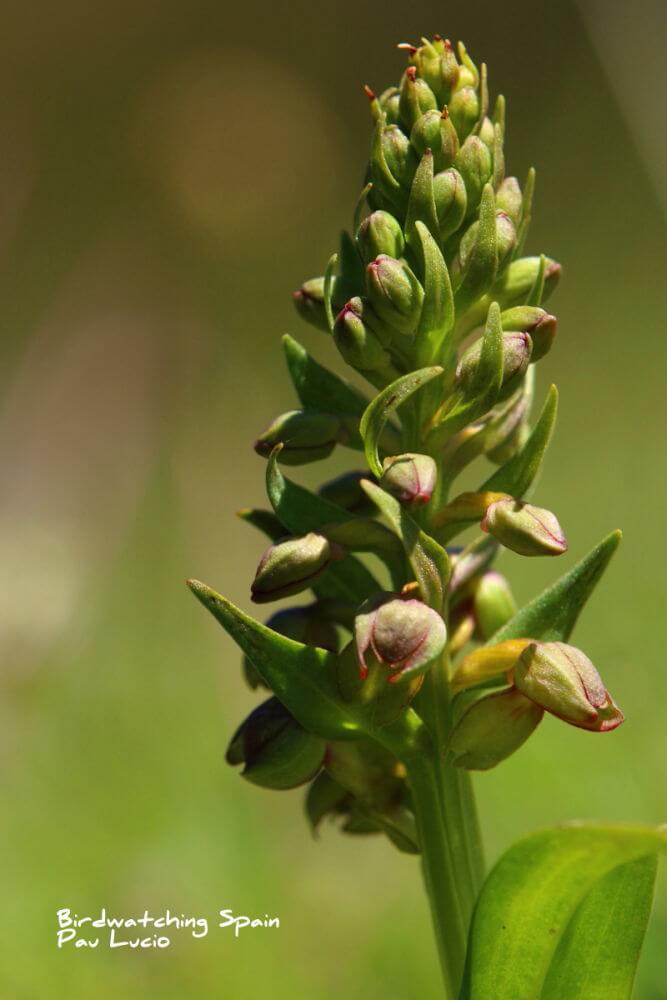Birdwatching and wildlife tours in Spain
Orchids tours Spain
Bellow, there is a description of the orchids seen during our wildlife and orchids tours in Spain. Besides, you will find information related about our four main orchid itineraries.
The first itinerary is in Costa Blanca. Alicante province is part of the Valencia Region, and it is considered a botanical hotspot for the diversity and number of plants found, many of them endemics. Thus, there is a remarkable number of orchids which we will show you during our local trips. The season starts in February to June, being March and April the months with more species blooming. The diversity of habitats and microclimates makes it possible to find in the Valencia Region 77 species of orchids.
The second area is the famous Cantabrian Mountains, which includes the popular Picos de Europa National Park in NW Spain. The pristine meadows hold an interesting variety of orchids, both Mediterranean and Atlantic species. The best time to visit is June/July. Besides that, the region is considered one the best places for butterflies in Europe.
Our third itinerary visits the hills of Granada and Málaga in Andalusia, a perfect spot to enjoy Fan-lipped orchid, Bumblebee orchid, Giant orchid and Small Woodcock among many others. April is probably the best month to join this orchid holiday in Spain.
Finally, the forth area is the Serranía de Cuenca. We combine this lovely mountain range with birds in la Mancha. In the mountains, we will look for the endemic Orchis cazorlensis, Early-spider orchid, Champagne orchid, Helleborines, etc. In addition, we recommend visiting the area in May, however, June and July are also a good option as it will be better for butterflies and orchids from the Epipactis genus.
Wild orchids hybrids found in the mountains of Costa Blanca (Valencia Region)
Hybrids are common among the Ophrys genus. So, following there is a small selection found around Costa Blanca. To start with, the first one is Ophrys x pseudoespeculum, a hybrid derived from Woodcock orchid and Yellow-bee orchid. The second one is Ophrys x serrae, and it was described for the first time in 2015. It is the result of crossing Ophrys lucentina and Yellow-bee Orchid. The third photo refers to Orchis x bivonae a beautiful hybrid and a cross of Italian man orchid and Man orchid.
Another incredible gorgeous hybrid is Ophrys x pielteri (fourth picture), a cross of Woodcock and Sawfly orchid. Finally, the last one is Ophrys x castroviejoi. This stunning orchid is the result of crossing Woodcock orchid and Mirror orchid.
Orchids from the Ophrys genus: Orchids trips in Spain.
The Ophrys genus, is the most abundant genus in the lowlands of Valencia and Granada. The first picture refers to the Bumblebee orchid (Ophrys bombyliflora). We see this flower during April in our wildlife tour around Granada.
Between the North Alicante and South Valencia provinces, we find the endemic Ophrys lucentina (second photo) which has a distinctive yellow border. The Sombre-bee orchid (Ophrys lupercalis) is shown in the third place and it is probably one of the most common and widespread orchids in Spain. The Small Woodcock Orchid (Ophrys picta) is also a species we see in our trips around Andalusia: Málaga and Granada. Finally, the last two orchids are Bee orchid (Ophrys apifera) and Yellow-bee orchid (Ophrys lutea) which can be seen in different itineraries.
The first photo shows a Dark-bee orchid (Ophrys dyris). Its distribution is mainly the Iberian Peninsula and North Morocco, however, is more abundant in East Spain. Thus, this orchid can be seen in our itinerary around Valencia. The second picture shows an Early-spider orchid (Ophrys sphegodes). In the third photo, you can see a Fly orchid (Ophrys insectifera), which is an uncommon species and only seen in our Picos tour. The fourth photo shows a Mirror orchid (Ophrys speculum), a widely spread orchid that can be seen from March in the lowlands of Valencia. The following orchid is a Woodcock orchid (Ophrys scolopax), which is also a common species. Finally, the last one is the beautiful Sawfly orchid (Ophrys tenthredinifera), which you will see in most of our orchids tours as it is widely spread.
Orquids tours in Spain: Orchis genus
On the first image, we have the endemic (Orchis cazorlensis), an endemic orchid found in the Iberian System mountains. We see this orchid during our trip to la Mancha and Serranía de Cuenca in May. The second photo shows the beautiful Lady orchid (Orchis purpurea), which is seen during late April/early May in Valencia. The third flower is the Man orchid (Orchis anthropophora), a common species in early April around the lowlands of Valencia.
The fourth picture shows the Italian orchid or also known as Naked man orchid (Orchis italica). This species can reach high densities with hundreds of plants in a small plot of land. The fifth picture is an Early-purple orchid (Orchis mascula) which we see in La Serranía de Cuenca as well as in Cantabrian mountains. The last one is a Mediterranean version of the previous one, the Southern early-purple orchid (Orchis olbiensis). It is a very variable orchid going from white to dark-pink, and a common species in the hills of Costa Blanca.
Helleborines: Cephalanthera and Epipactis genus
The first Helleborine is the Narrow-leaved (Cephalanthera longifolia) followed by a Red Helleborine (Cephalanthera rubra). The picture in the middle shows a White Helleborine (Cephalanthera damasonium). You can see these species on Valencia and la Mancha tour. On the right side, you will see a Dark-red Helleborine (Epipactis atrorubens) and a Marsh Helleborine (Epipactis palustris), species which we see in the Cantabrian mountains in late June/early July.
Gymnadenia and Serapia genus: Fragrant orchid and Tongue orchids
The first image is a Fragrant orchid (Gymnadenia conopsea), a plant we see in the Cantabrian mountains. It produces a pleasantly sweet, orangey smell that is strong especially in the evening.
Regarding tongue orchids, the second flower is the stunning Heart-flowered serapias (Serapias cordigera). The second one is the Tongue orchid (Serapia lingua) and finally, the Small-flowered tongue orchid (Serapia parviflora).
Neotinea genus
The first picture shows the elegant Burnt-tip orchid (Orchis ustulata), which we see in the Cantabrian Mountains. Then, on the second photo we have the Conical orchid (Neotinea conica), and finally on the right side, the Dense-flowered Orchid (Neotinea maculata). We will see both species in the hills of Costa Blanca (Valencia).
Anacamptis genus
The Pyramidal orchid (Anacamptis pyramidalis) can reach high densities along with the Bug orchid (Anacamptis fragans) which is on the fourth picture. Most important, they are a great spectacle forming carpets that can be seen in our orchids trips to Costa Blanca (Valencia). The second photo shows a Pink butterfly orchid (Anacamptis papilonacea). Fan-lipped orchid (Anacamptis collina) is in third place. The flower before last is the Champagne orchid (Orchis champagneuxii), a relatively common species during our itineraries. Finally, you will see on the last place, a pale form Green-veined orchid (Orchis morio).
Himantoglossum and Platanthera genus
The Giant orchid (Himantoglossum robertianum) is the largest of all European orchids and can be seen in large numbers on our trip to Costa Blanca (Valencia). The photo on the right shows another “giant”, the Lizard orchid (Himantoglossum hircinum). This flower reaches high densities in the areas we visit on our tour to the Cantabrian mountains. Finally, the last picture shows the Lesser-butterfly orchid (Platanthera bifolia).
Neottia, Listera and Spiranthes genus
The first picture shows a Bird nest orchid (Neottia nidus-avis), an entirely non-photosynthetic plant that obtains energy and nutrients from fungi. The following orchid is a Common twayblade (Neottia ovata). On the right side, you will find the only orchid which blooms in Autumn, the Autumn lady’s tresses (Spiranthes spiralis). You can see this little beauty from late September.
Limodore, Dactylorhiza and Coeloglossum genus
In the first place, we have the Violet limodore (Limodorum abortivum). There is still a lot of debate about if it is a parasitic plant. The second picture shows a Heath spotted orchid (Dactylorhiza maculata), while the other on the right is an Elder-flowered orchid (Dactylorhiza sambucina). The last picture shows a Frog orchid (Coeloglossum viride)
Apart from these orchid images, we post regularly on social media, please click on our Instagram to see more images, and if you wish join our social community.
Thus, if you are keen on orchids and general wildlife, please visit our tour calendar where you will find different schedule itineraries. Nevertheless, we can put together an itinerary to suit your needs. Please, do not hesitate to contact us for more information.
